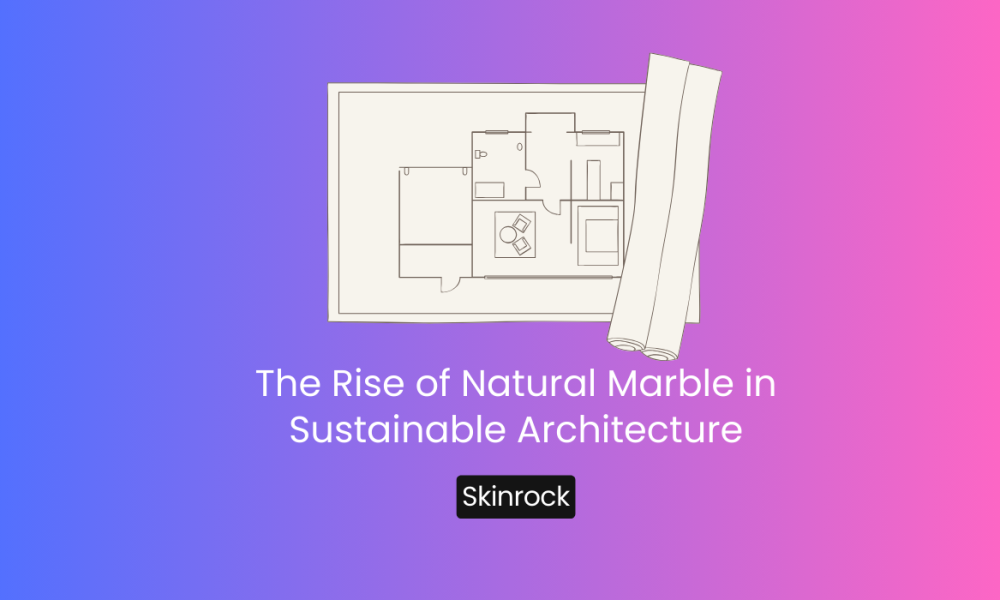As the demand for sustainable construction materials grows, architects and designers are increasingly turning to natural marble for its eco-friendly properties and timeless appeal. Long celebrated for its beauty and durability, marble is emerging as a sustainable choice in modern architecture. This article explores why natural marble is gaining traction in sustainable building practices and how it contributes to a greener future.
1. A Renewable and Natural Resource
Marble is a natural stone that is quarried from the earth, making it a renewable resource when responsibly sourced. Unlike synthetic materials, marble does not require energy-intensive manufacturing processes, reducing its carbon footprint.
- Minimal processing: The production of marble involves cutting and finishing, which consume less energy compared to producing concrete or steel.
- Biodegradability: At the end of its lifecycle, marble can be recycled or returned to the earth without causing environmental harm.
2. Longevity Reduces Waste
One of the standout features of natural marble is its durability.
- Timeless lifespan: High-quality marble can last for centuries, as seen in historical monuments. This longevity reduces the need for frequent replacements, minimizing waste.
- Resilience: Marble’s ability to withstand wear and tear makes it ideal for high-traffic areas, ensuring sustainable use over time.
3. Energy Efficiency Through Thermal Mass
Marble is an excellent thermal mass material, meaning it can absorb and store heat. This property makes it an energy-efficient choice in sustainable architecture.
- Regulates indoor temperature: Marble keeps interiors cooler in warm climates, reducing reliance on air conditioning.
- Passive heating: In colder climates, marble can store and release heat, aiding in energy conservation.
4. Eco-Friendly Quarrying Practices
Sustainable quarrying techniques have significantly reduced the environmental impact of marble extraction.
- Water recycling: Many quarries now recycle water used in the cutting and polishing processes.
- Reduced emissions: Advances in technology have led to cleaner, more efficient extraction methods.
- Ethical sourcing: Certification programs ensure that marble is sourced responsibly, protecting local ecosystems and communities.
5. Versatility for Green Designs
Marble’s versatility makes it a valuable material for sustainable architecture.
- Interior and exterior use: From flooring and countertops to facades, marble adapts to various applications.
- Timeless aesthetic: Its classic beauty eliminates the need for frequent renovations or updates, aligning with sustainability goals.
6. Recyclability and Repurposing
Natural marble can be repurposed or recycled, further contributing to sustainable practices.
- Recycled marble: Waste marble can be crushed and reused in construction as aggregate material.
- Repurposed slabs: Old marble installations can be refurbished for new projects, reducing the demand for fresh materials.
Also Read: How to Identify High-Quality Natural Marble: A Buyer’s Guide
FAQs About Natural Marble in Sustainable Architecture
1. Is marble truly sustainable?
Yes, when responsibly sourced and used, marble is a sustainable material due to its longevity, natural origin, and recyclability.
2. Does quarrying marble harm the environment?
Modern quarrying practices focus on reducing environmental impact through water recycling, reduced emissions, and ethical sourcing.
3. Can marble be reused in construction?
Absolutely. Marble can be repurposed for various applications, such as flooring, cladding, or landscaping materials.
4. How does marble contribute to energy efficiency?
Marble’s thermal mass properties help regulate indoor temperatures, reducing energy consumption for heating and cooling.
5. Is marble cost-effective in sustainable architecture?
While marble may have a higher initial cost, its durability and timeless appeal reduce long-term expenses, making it a cost-effective sustainable choice.
Conclusion
The rise of natural marble in sustainable architecture highlights its potential as an eco-friendly, durable, and versatile material. Its ability to blend luxury with sustainability makes it an excellent choice for modern construction projects. As technology and ethical sourcing practices improve, marble will continue to play a pivotal role in building a greener future.
Considering marble for your next project? Embrace its timeless beauty and sustainable advantages to create spaces that stand the test of time while protecting the environment.

